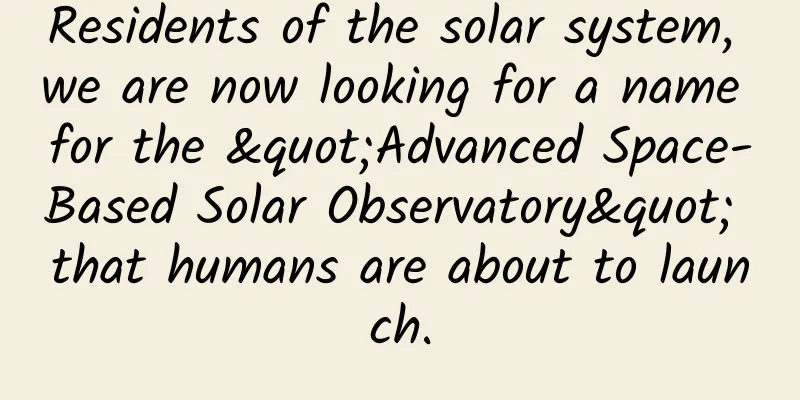The Necklace Nebula is very beautiful and bright, the highlight of the Northern Milky Way

|
At first the distant star was submerged in gas by its companion, forming a huge necklace nebula. NASA says: 10,000 years ago a larger star was devouring its smaller companion. The Necklace Nebula shines like a jewel, but it's actually just a burning mass of gas. The two stars were tightly bound in orbital marriage, slowly tearing each other apart. Like many ties, they eventually became precious things. Encounter the Necklace Nebula (notoriously inferior to PNG 054.203.4). The planetary nebula is about 15,000 light-years away from Earth, in the constellation Sagitta in the northern sky. NASA's Hubble Telescope shows that the nebula is like an oval green emerald, with a twinkling gaseous jewel pattern and a binary star system shining in the center. This tiny speck may look like a single star, but it's anything but a bachelor. About 10,000 years ago, the gaseous outer layers of a new star ate away at its companion, NASA said. The smaller companion star is still orbiting it like a gas-filled shell, like an ordinary envelope. That's pretty romantic. As you can imagine, having an interstellar orbit pass through is like passing through someone's intestines, which isn't great stuff. As the smaller star's orbit crosses the orbit of the larger companion, the gas swirling around the companion gets faster and faster, according to United. At some point, the gas swirling around the pair of satellites begins to swirl, and a large chunk of it is flung out into space like a long field. Gas escaping from the oval shape rushes out in all directions, creating the dramatic necklace shape seen by Hubble. It may be like sparkling jewels leaving the outer ring of a ring. The gas forms dense clusters of stars, NASA said. Right now, the two stars at the center of the nebula are continuing their frantic dance of trading blows, orbiting each other in a little more than one Earth day, NASA said. But the end of their relationship is uncertain. Binary couples end in massive supernova explosions. Even the brightest jewels have their day. The Earth is the third planet from the Sun, and it is the only object known to Hubble. New content will be added to the existing focus material. The Earth is the third planet from the Sun, and it is the only object known to Hubble. While large amounts of water molecules may be found in the solar system, only Earth exists in liquid form. The surface layer is composed of moving crustal movements, intertwined with mountains, volcanoes, and earthquakes. A supernova is a blinding explosion of great power. It occurs in a split second when a giant star or white dwarf reaches the end of nuclear fusion. The original star, called a "forerunner," is completely collapsed and is neither a neutron star nor a black hole. The peak magnitude of a supernova can be compared to the weeks and months of the Milky Way's waning years. The Necklace Nebula is a gigameter-long star located 15,000 light-years away in the northern sky in the constellation of Sagitta. It was discovered in 2005 by the Newton telescope as part of the H Alpha project, which focuses on studying northern Milky Way nebulae. Related knowledge A light-year is a unit of length, which refers to the distance that light travels in a vacuum in one year, which is approximately 9.46 trillion kilometers. Light-years are generally used in astronomy to measure very long distances, such as the distance between the solar system and another star. Sagitta is a dim but unique northern constellation. Its original name "Sagitta" is Latin, meaning arrow. Sagitta is one of the 48 constellations listed by the second-century astronomer Claudius Ptolemy, and is also one of the 88 modern constellations defined by the International Astronomical Union. Sagitta has a long history, but all its stars are no brighter than the third magnitude, and its area is the third smallest among the 88 constellations. The Necklace Nebula is a planetary nebula located about 15,000 light-years away in the constellation Sagitta. It was discovered in 2005 by the ISSEC-Newton H-alpha Photoelectric Survey, a ground-based program to study planetary nebulae in the northern galactic plane using H-alpha. The Necklace Nebula is formed when a giant star explodes too close to a Sun-like companion. The two stars orbit each other in a relatively small orbit, creating the Necklace Nebula. A white dwarf, also known as a degenerate dwarf, is a stellar nuclear remnant composed mainly of electron-degenerate matter. A white dwarf has a very high density: its mass is comparable to that of the Sun, but its volume is similar to that of the Earth. A white dwarf has no nuclear fusion to generate energy, and its faint brightness comes from the thermal radiation of the stored energy. The closest known white dwarf is Sirius B, a binary star 8.6 light years away, the companion of Sirius A. Currently, there are 8 white dwarfs in the 100 star systems closest to the Sun. BY:Brandon Specktor FY: Xu Zili If there is any infringement of related content, please contact the author to delete it after the work is published. Please obtain authorization for reprinting, and pay attention to maintaining integrity and indicating the source |
<<: In 5 simple steps, you can restore the “paper animation” from 190 years ago!
Recommend
Android 5.1 quietly upgraded to version LMY47E
As usual, after each major Android version is rel...
Uncle San - 2022 latest full-price account start-up method, 3 hours of practical content, team beta version
Uncle San - 2022 latest full-price account gamepla...
The "biggest scar on Earth" is still expanding and may lead to the birth of new continents in the future
The largest fault zone In the far east of Africa,...
Tips for choosing advertising channels!
As of today in 2020, with the rapid rise and matu...
Essential information for APP promotion and operation: the most comprehensive and complete online event planning guidance program!
Event operation is an explosive operation method ...
Traveling during the Spring Festival: A guide to protecting your health during the silver age
The auspicious dragon leaves the old year, the sn...
How does APP user operation conduct new user acquisition activities?
In the second half of the Internet, traffic is qu...
Joining hands with "CCTV 2023 Host Competition", Deep Blue Motors extends the range of New Voice
Youth must struggle, and it is time to pursue dre...
Baidu search CPC/eCPC/oCPC in one article
When promoting, many students often cannot distin...
A woman temporarily lost her eyesight after staying up late to watch TV series! Many people are still making these mistakes...
Expert of this article: Li Zongou, Master of Opht...
99% of products fail due to poor operation!
How to succeed in starting a business? I believe ...
Iceland: Less ice, half of the volcano without sugar
The other side of Eurasia In the cold wind of the...
Kuaishou Search for Hidden Traffic Opportunities
When users' content consumption needs extend ...
There are four stages of user growth, like falling in love?
Is user growth like falling in love? It's ind...
Love has a “shelf life”, so does myopia surgery also have a “shelf life”?
I believe that most people have this simple and p...









